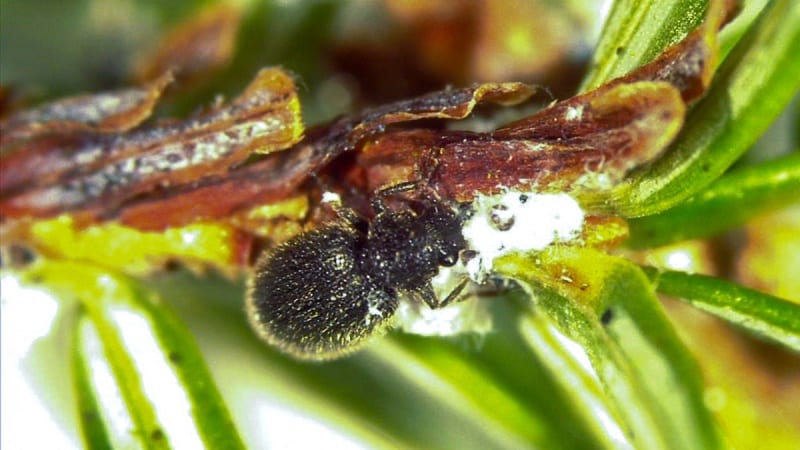Biocontrol Bugs Emerge from Pupation
News
If you read our most recent newsletter, you heard all about what our Laricobius beetles are doing in the lab during the summer. In short they pupate, completing a life stage that lies between being a larva and being an adult beetle. During this time, as all of the Little Lari’s are developing into HWA-munching adults, they are vulnerable, unable to move out of their puparium and the soil. While they are in this transformation phase, they are more susceptible to predators, bacteria, or fungi. This is often the time in laboratory settings where the colony is most at risk, despite the relatively safe soil containers they are completing their pupation in at our biocontrol lab.


Last Friday, though, we received some good news: we had our first emergence of Laricobius beetles in our lab colony! These beetles have woken up hungry and ready to feed on HWA. Luckily, we’ve got some stored food for them while we wait for HWA in the wild to begin feeding and developing following their summer aestivation period.
The next step for these beetles will be raising them up in the lab for release. We are currently putting together a release schedule for Laricobius this fall, so some of these emerging beetles will be helping manage HWA in New York’s forests. In order to release them on time, when HWA is active, we use data from the HWA Phenology Project collected by citizen scientists in New York. You can help us by observing the timing of HWA’s major life stages in the field.
We are excited to be proud parents of live beetles this year, and look forward to continued success going forward. Welcome to the lab, Little Lari’s!
Photos
Top: Laricobius pupae
Bottom: An adult Laricobius beetle, snacking on HWA in the lab
Report HWA Findings
Stay Updated
Sign up below to receive email updates:
This form is protected by reCAPTCHA and the Google Privacy Policy and Terms of Service apply.

